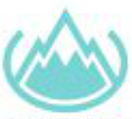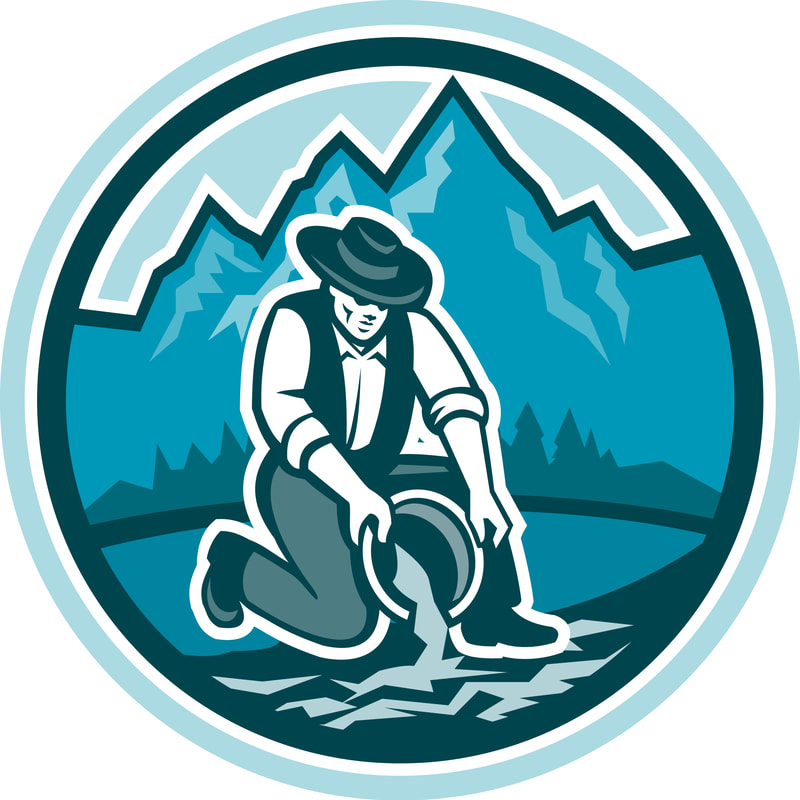 Snowshoe Mt. Resources - Each permit is as unique as the ground their proposing to explore. However, some hazards are universal in nature and accompany every mining operation. One such universal hazard is a chemical spill such as Oil, fuel, grease, or hydraulic fluids. A placer mine is unique in the concern for chemical spills because of a few primary reasons. Contamination of the water used to process pay material through a wash plant compromises the recovery of gold. If pay material, is contaminated from a spill, and fed through a wash plant, it will contaminate the recovery process too. Water and gravity are the basic principals used in separating gold from soils. Contamination of the water from an oil product will cause the fine gold to float resulting in loss. It takes very little oil product to contaminate a mine site which is why having a spill kit in each piece of equipment on site and a drip pan under each water pump is a must for any responsible operation. A stringent preventive maintenance schedule based on manufacturers recommendations for hydraulic lines is important to minimize the potential for a spill. Any machine operating near the 10-meter riparian buffer or in the mining area should bear special precautions. These precautions should include a dike/ditch in the immediate area surrounding the machine to contain a spill. Greasing, fueling and oiling machines is part of the daily general maintenance. To minimize the potential for contamination of the mining area, ponds and/or a water source/course it may be best to have a designated area for the daily maintenance of equipment. This designated area for daily maintenance and where fuel is transported to should be well away from the mining area, ponds and water source/course. It should be diked and ditched to contain the potential up to a large spill. Bulk fueling stations should also be in an area that can be diked and ditched to contain the potential of a large spill. Ignition of even a small spill can mean bodily injury or even death of a worker. In remote areas such an ignition can also result in a forest fire. Every permitted mine is required to have an Emergency Response Plan (ERP). The ERP is a document that provides general procedures for that site. Part of an ERP is the Spill Response for small spills (less than 100 litres) and large spills (over 100 litres). 100 litres is 26 gallons. Having an adequate spill kit to absorb the volume of a spill up to 100 litres is important but the containing and closing out of the source of the spill quickly is vital to protecting the environment and the mine. Consider the following procedures as a response to a spill on your mine site. Basic procedures for responding to a small spill (less than 100 litres) is as follows. • Notify people in the immediate area to move away from the spill. • Have a fire extinguisher available. • Wear appropriate personal protective equipment (PPE) such as gloves, goggles, • Use the absorbent material to contain the spill if this can be done without risk of injury. • Prevent the spill from entering any nearby waterway. • Clean up the spill by working from the outside of the spill toward the center. This will minimize the spread of contamination. • Be sure to allow adequate contact time for complete absorption of the fluid. • Clean-up the absorb content and place into a plastic bag or proper container. • Properly place spill cleanup debris in a container and for proper disposal. • Wash hands and other exposed skin after completing clean-up. • Notify Ministry of Mines of the spill if you require assistance or additional information. • Restock material used in spill kit. • Investigate the source of the spill and methods to prevent future incidents. A large spill (over 100 litres) of fuel is dangerous. Ignition can result in serious injury or death of a worker. This includes personnel who are initiating a response to contain the spill for clean up. Basic procedures for a spill greater than 100 litres are as follows. Evacuate • Get to a safe area immediately. Alarm • Notify others. Identify the spilled substance. • Ex. Diesel, Hydraulic fluid, Get help (Refer to Site ERP) • Inform Supervisor/Mine Manager • Notify Client Representative and/or Landowner. • Fire dept • Ministry of environment • Mines Inspector • OHSC or Worker Health and Safety Representative • Contact the nearest contractor to clean up the spill. Hazard Assessment • Refer to Material Safety Data Sheets. • Flammability • Exposure Limits • Ignition Sources • First Aid Limitations Action Plan • Refer to Material Safety Data Sheet • Prepare site for Emergency Vehicle Access • Tools and Equipment Required • Manpower Required • Near a creek • Fire Fighting Equipment • Personal Protective Equipment • Secure Ignition Sources • No Smoking • First Aid Location Contain the spill. • Refer to Material Safety Data Sheets • Diesel – Ventilate spill area, Dike, and contain spills. • Hydraulic Fluid - Dike and contain spills. Clean up the spill. • Nearest Contractor Will Clean up the spill. Investigate • Review Incident/Accident Investigation Form and Document Report • Release Reporting Requirements
0 Comments
Leave a Reply. |
Archives
July 2024
Categories |

 RSS Feed
RSS Feed